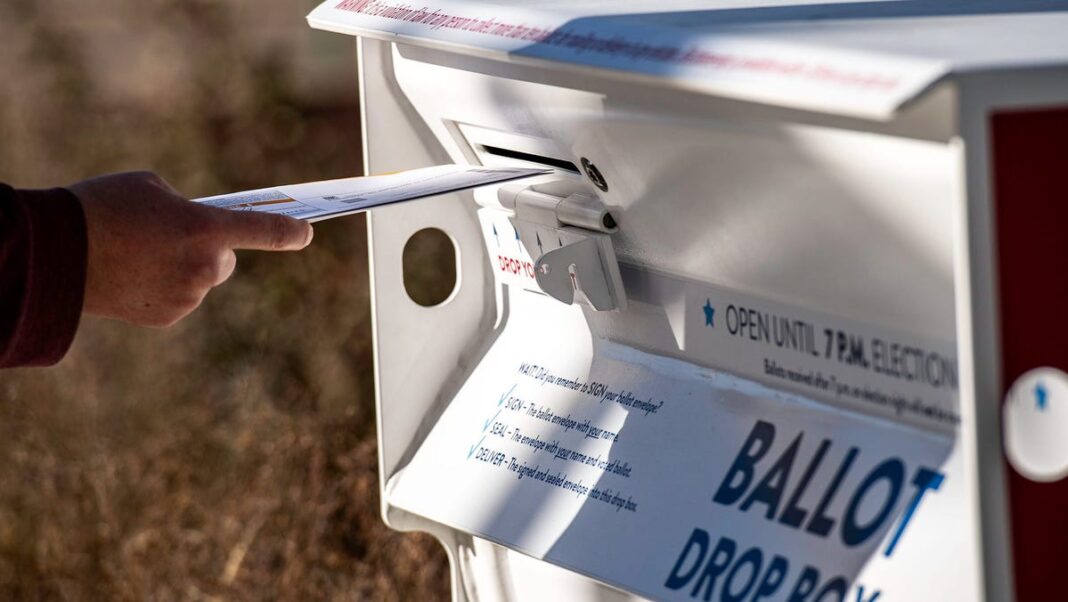What is ballot curing? Some voters can still ensure their 2024 election votes are counted
While ballots themselves can’t fall ill, many voters may need to “cure” their ballots after an election to guarantee they are counted. If you used an absentee or provisional ballot, election officials will check it to confirm it contains all required information — and they frequently discover it does not.
For instance, an election worker might notice that the signature on an absentee ballot doesn’t match the one kept on file at the election office. Similarly, if a voter shows up at the polls without the correct photo ID, they may complete a provisional ballot that won’t be included until the right ID is submitted to the election office.
In the competitive swing state of Nevada, nearly 14,000 ballots required signature corrections on the Monday before the election, according to Secretary of State Cisco Aguilar. Likewise, hundreds of ballots were rejected in the county surrounding Albuquerque, New Mexico, as reported by a local news outlet.
Aguilar emphasized the importance of voters understanding the need to cure their ballots to ensure their voices are heard. “This is particularly crucial for younger voters who may not have an established signature and for older voters whose signatures may have changed over time,” he stated in a press release.
Ahtar Hassebullah, executive director of the ACLU of Nevada, mentioned in an interview on Nov. 5 that he anticipated a decrease in the number of ballots requiring fixes. “Everyone is working to minimize this number,” he noted. “It’s just a part of the process here.”
By the mentioned Monday, a total of 9,956 ballots still needed correction throughout Nevada, as reported by the Secretary of State’s office.
Across the country, about 550,000 absentee ballots were rejected during the 2022 congressional elections, according to Ballotpedia News. Research from the Massachusetts Institute of Technology shows that states with policies allowing voters to cure their absentee ballots have lower rejection rates.
The positive news is that most states typically allow voters to correct, or “cure,” a ballot. This usually requires returning to the election office within a designated timeframe to provide the needed information.
Election offices often reach out to voters to inform them about the need to cure their ballots, but sometimes they may not. Therefore, it’s advisable for voters to take the initiative to verify that their ballots will be counted. Here are some situations in which voters may need to cure their ballots.
Do I need to cure my ballot?
If you live in a state that necessitates voter ID and couldn’t provide one at the polls, you might have been permitted to vote with a provisional ballot, which is set aside while election officials determine if it should be counted. These voters generally need to return with the correct ID to fix their ballots.
If your state conducts signature verification—matching the signature on a ballot envelope to a signature the election office has on record—your ballot might be rejected. In that case, you will need to return to the election office to cure your absentee ballot so that your vote counts.
How long do I have to cure my ballot?
The time allowed for voters to cure their ballots varies by state. Below are some deadlines in states where voters can still cure their ballots from the Nov. 5 presidential election.
- In Nevada, absentee ballot signatures must be cured by 5 p.m. on Tuesday, Nov. 12, as stated by the Secretary of State’s office.
- In Texas, voters who possess acceptable photo IDs but didn’t show them at the polls have until six days after the election to present valid photo IDs to their county voter registrar, according to the Secretary of State’s office.
- In Colorado, voters are allowed until the end of the night on the eighth day after the election to cure their ballots, as reported by the Secretary of State’s office.
Is it too late to cure my ballot?
In many states, the deadlines for curing ballots have passed. The states where this is the case include:
- Florida
- Georgia
- Michigan
- Wisconsin

